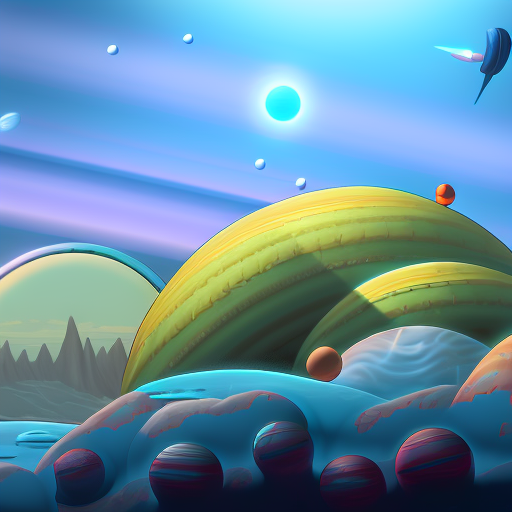
Journey to the Seventh Planet: Exploring the Mysteries of Uranus
Uranus, the seventh planet from the sun, has long been an object of fascination for astronomers and space enthusiasts alike. With its distinctive blue-green color, tilted axis, and quirky orbit, Uranus poses many questions about the formation and evolution of our solar system. Now, with advances in space exploration technology, we are taking another step in our journey to unravel the mysteries of this enigmatic planet.
Uncovering the Secrets of Uranus
One of the most striking features of Uranus is its unique tilt. Unlike most other planets in our solar system, which have a relatively upright axis of rotation, Uranus is tilted at almost a 98-degree angle. This creates some unusual phenomena, such as extreme seasonal variations and odd magnetic field behavior. Scientists believe that these quirks may be related to the planet’s formation, which could have involved a massive collision with another celestial body.
Another area of interest is Uranus’s rings. While not as prominent as those of Saturn, Uranus has a complex system of rings made up of thousands of small particles. These rings may be the remnants of a moon that was destroyed in a collision, or they could be the result of material left over from the planet’s formation. Studying the composition and structure of these rings can provide valuable insights into the processes that shaped our solar system.
Exploring Uranus: Past, Present, and Future
The first spacecraft to visit Uranus was Voyager 2, which flew by the planet in 1986. This mission provided a wealth of information about Uranus and its moons, as well as some of the first up-close images of the planet’s distinctive weather patterns. However, the brief flyby left many questions unanswered, and scientists have been eagerly awaiting a return mission to Uranus ever since.
Currently, there are several proposed missions to Uranus in the works. The European Space Agency’s Uranus Pathfinder mission, set to launch in 2034, will involve a flyby of Uranus and one of its moons, Miranda. Meanwhile, NASA is considering a mission called the Uranus Orbiter and Probe, which would conduct a detailed study of the planet and its moons from orbit.
As we continue on our journey to the seventh planet, we are sure to uncover many more mysteries and surprises. Uranus may be an icy, distant world, but it holds a wealth of information about our own origins and the processes that shaped our solar system. Who knows what secrets await us on this mysterious planet?
